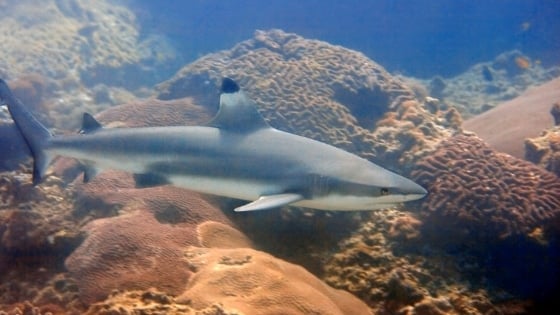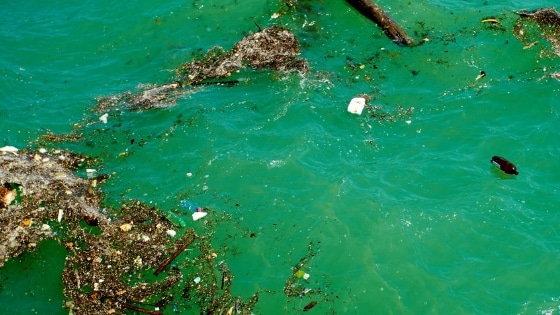
Rubbish In The Ocean 🌊 – Can A Fleet Of Rubbish Cleaning Drones Rescue Our Seas?
Rubbish In The Ocean 🌊: thankfully, in 2021, the major issue of huge amounts of rubbish in the ocean appears to be getting through to people. As the old saying goes, “out of sight, out of mind”. This applies to many things related to waste and recycling, unfortunately. But, this issue seems to be finally getting through to people.
At Waster, we have a real focus on reducing plastic waste and illegal dumping (see our blog on alternatives to traditional plastic items) – by making all recycling streams and services available to every type of customer, no matter how small they are. Whilst global warming and climate change gets all the headlines, we really believe that the problem of how much rubbish is in the ocean (and growing every day) is an even bigger issue – one that is much easier to solve.
>Download Now: Free PDF Business Owners Guide To General Waste Bin Services
A bit about Waster
We help reduce plastic pollution by providing all available recycling services to small and medium Aussie companies on flexible 30-day agreements. This 30-day contract brings about loads of benefits not acquirable through the dreaded long-term contract. With that said, you should check out our waste and recycling services below:
First off, how much rubbish is and ends up in the ocean each year?
According to the magazine National Geographic, the raw statistics relating to how much rubbish is in the ocean is shocking:
“There are 5.25 trillion pieces of plastic debris in the ocean. Of that mass, 269,000 tons float on the surface, while some four billion plastic microfibers per square kilometre litter the deep sea.”

The answer is that we really do not know exactly how much rubbish is in the ocean. We do not even where its exact location is! It is estimated using scientific models and, of course, some places have much more waste than others.
Due to trade winds and currents, etc., there are some areas with huge amounts of waste such as the infamous Pacific Ocean rubbish island – the patch of rubbish in the ocean the size of Texas!
We have covered this huge floating garbage patch in blogs previously, as well as the terrible impact they have on sea life.
Why is it so difficult to clean up and remove the rubbish in the ocean?
It is, of course, very difficult to remove floating debris from the open ocean – let alone the waste that is underwater and not visible from the surface.
We have covered last year one idea on how to clean up the ocean rubbish patch. You can take a look at this blog about the Ocean Cleanup and how one entrepreneur was using giant floating rings to capture and remove the rubbish in the middle of the Pacific Ocean.
Today, we will cover another good idea – basically, the usage of floating garbage eating drones!
The negative
First off, know that having a significant amount of rubbish in the seas and oceans can have adverse (sometimes irreversible) effects. So, what are the said adverse effects?
Here are the main examples of the “not good at all” effects of having rubbish pollution in the ocean:
1. Loss of sea life
Unfortunately, this has become an all too common occurrence in our seas and oceans. Marine animals and plants will certainly bear the waste we produce and throw into the ocean.
Turtles, for example, see plastic bags and balloons as appetizing meals and eat them. As a result, of course, they either choke or poison themselves to death.
We have not even gotten to the worse part, yet – toxic substances leaking. Usually, the thrown rubbish contain toxic substances which can absorb oxygen in the ocean. So, we already know what happens next: suffocating sea animals and plants in their own natural habitat.
2. Ruining the food chain
Less fish equates to less food for other fishes and, of course, humans. Rubbish pollution in the ocean results in messing up the food chain and depleting the sea life population.
Can a floating drone eat up all the rubbish in the ocean?
Check out the short video below on the Waste Shark, a device created by Rann Marine in the Netherlands.

Quoting from www.watersource.awa.asn.au:
“The WasteShark is a 1.5-metre long drone that works as an aquatic vacuum cleaner. It’s modelled on the whale shark, which is a filter feeder that sucks prey like plankton into its mouth.
“As it ‘swims’ through water, the WasteShark sucks in plastics and other rubbish, eating up to 200 litres of waste in a single trip.
“The drone is capable of swimming for up to 16 hours and can be controlled manually or set to patrol a defined area.
“Creator Richard Hardiman said he developed the WasteShark after watching two men attempting to collect rubbish from the harbour in Cape Town using a net.
“Not knowing anything about maritime practice or waste management in water … I thought I could do it better,” Hardiman said in a TEDx Talk earlier this year.”
A similar project called a Seabin has recently been launched in WA.
Can this approach work in the open ocean?
This approach will have a couple of huge hurdles to overcome to make a reak impact on the rubbish in the ocean:
- the sheer volume of plastic entering the ocean every year will dwarf any reduction by drones of this nature
- the technical problem of functioning in the open ocean – the last thing we need is drones breaking down in the open sea.
At-sea drones will need to be followed by huge garbage collecting ship.
The drones will only be able to impact the top level of the ocean.

The literal tip of an iceberg
The saying “tip of an iceberg” is very pertinent to rubbish in the ocean as the microfibers are under the waves and get eaten by sea life. No existing drone can solve this issue yet.
Conclusion on rubbish in the ocean
The first step in a long journey is always very important, so we should welcome this development. The rubbish in the ocean and the huge Pacific Ocean floating rubbish dump is such a huge problem. It is so huge that it requires an even bigger global solution.
Let’s stay positive, welcome the Waste Shark, and keep going!
Leave a Reply Cancel reply


